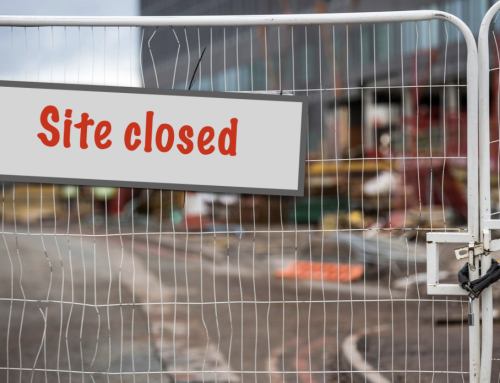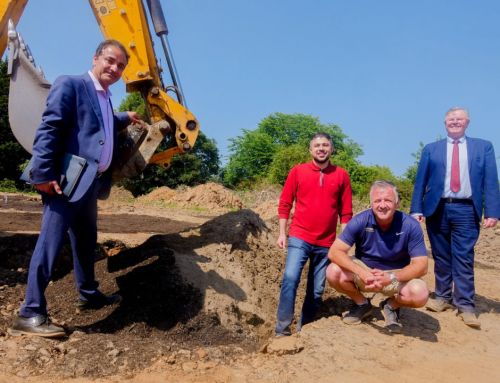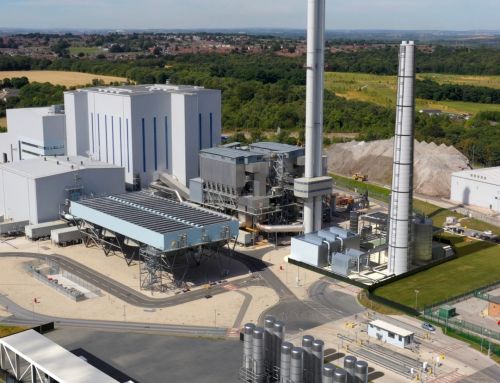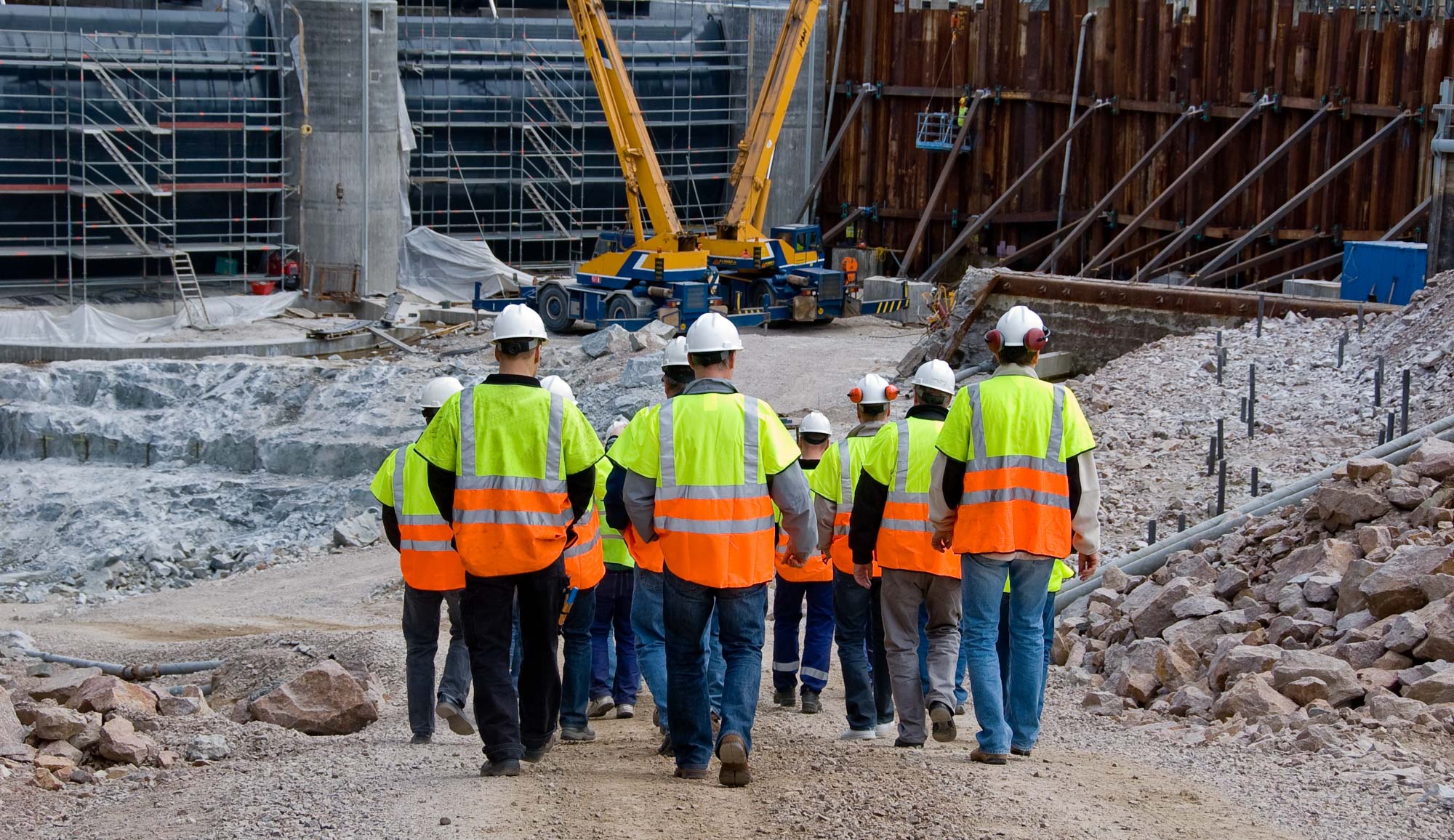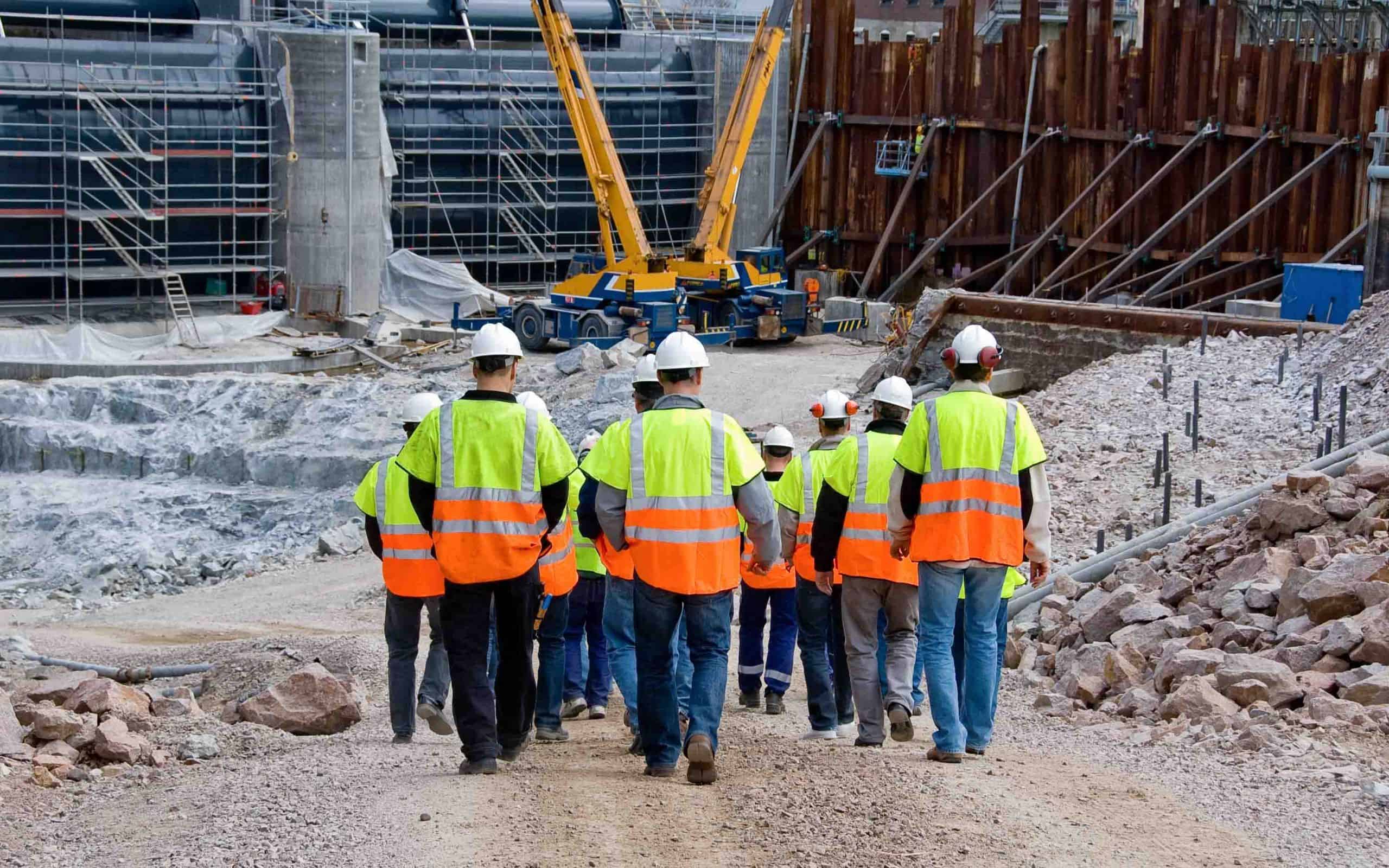T he construction industry is on track for less than half of its government-backed “net-zero priorities”, according to the Construction Leadership Council (CLC).
The CLC has published its sixth progress update to its CO2nstruct Zero Performance Framework, which was launched at COP26 in November 2021 as a universal tool to collect data and report on how construction is tackling the carbon challenge.
The Performance Framework comprises 31 metrics across nine priority areas. Each tells a story of how the sector is reducing its carbon emissions across construction activities; the resulting buildings and structures; and the transport of products and materials.
However, the industry is only on track in four of its nine priority areas. Priorities defined as green (on track) are:
- Priority 1: Accelerating the shift of the construction workforce to zero-emission vehicles and onsite plant
- Priority 3: Championing developments and infrastructure investments that enable low-carbon modes of transport
- Priority 5: Scaling up industry capability to deliver low-carbon heat solutions in buildings, supporting heat-pump deployment, trials of hydrogen heating systems and heat networks
- Priority 6: Enhancing the energy performance of new and existing buildings through higher operational energy-efficiency standards and better building energy performance
The five other priority areas are defined as amber (more work needed). These are:
- Priority 2: Optimising the use of modern methods of construction and improved onsite logistics, in doing so reducing waste and transport to sites
- Priority 4: Working with the government to deliver retrofitting to improve the energy efficiency of the existing housing stock
- Priority 7: Implementing carbon measurement to support construction projects in making quantifiable decisions to remove carbon
- Priority 8: Designing out carbon, developing the capability of designers and construction professionals to design in line with the circular economy – shifting commercial models to reward measurable carbon reductions
- Priority 9: Supporting the development of innovative low-carbon materials, as well as advancing low-carbon solutions for manufacturing production processes and distribution
The CLC said further progress was expected on the measurement of operational and embodied carbon, with building-type benchmarks for all asset classes expected to be launched by 2024.
It added that the construction industry was progressing in providing customers with low-carbon choices and allowing them to reach net zero by offering low-carbon design options and advice from Environmental Product Declarations to retrofit.
In addition, more than 220 organisations have now joined CO2nstruct Zero as business champions or partners, having demonstrated carbon-reduction leadership. They are sharing good practices and collectively leading the sector’s progress to net zero.
For example, the report showcases Bradford Building Supplies’ employee retention scheme, which offers staff free home-energy assessments and an end-to-end retrofit plan, aiding CO2nstruct Zero Priority 4. This will enable employees to understand the customer journey and advise first-hand.
It also showcases the Environment Agency’s ambitious scheme to reduce embodied carbon by 45 per cent by implementing BIM analytics and carbon workflow on a tidal barrier design to protect 13,000 homes and businesses from tidal flooding. This is linked to CO2nstruct Zero Priority 7.
The final case study, from Keltbray, aligns with CO2nstruct Zero Priority 1 and outlines the benefits the firm has found in terms of fuel cost, reduced emissions, improved air quality and less noise from the site via electrification. Keltbray swapped fuel generators with a temporary building supply that provided electric power directly from the mains on several major construction sites in London.
Matt Palmer, Lower Thames Crossing executive director and CLC net-zero and biodiversity industry sponsor, said there was “a considerable way to go on this journey, as echoed by the Independent Committee for Climate Change’s recent progress report”.
He said: “Challenges exist, such as accelerating the number of retrofit coordinators, and we will be working with the National Retrofit Hub to explore this further.”
Palmer added that the publication of the recent Zero Diesel Route Map (setting out a path for the sector to reduce its reliance on diesel on sites by 78 per cent by 2035) and the first benchmark on carbon intensity was “a clear step in the right direction”.
In a foreword to the latest report, Minister of State for Industry at the Department for Business and Trade Nusrat Ghani said that “cutting carbon emissions in construction is crucial for achieving net zero by 2050”, adding that the report demonstrates “the great work being done across the sector to help achieve this and make UK construction fit for the future”.
Source: Construction News
T he construction industry is on track for less than half of its government-backed “net-zero priorities”, according to the Construction Leadership Council (CLC).
The CLC has published its sixth progress update to its CO2nstruct Zero Performance Framework, which was launched at COP26 in November 2021 as a universal tool to collect data and report on how construction is tackling the carbon challenge.
The Performance Framework comprises 31 metrics across nine priority areas. Each tells a story of how the sector is reducing its carbon emissions across construction activities; the resulting buildings and structures; and the transport of products and materials.
However, the industry is only on track in four of its nine priority areas. Priorities defined as green (on track) are:
- Priority 1: Accelerating the shift of the construction workforce to zero-emission vehicles and onsite plant
- Priority 3: Championing developments and infrastructure investments that enable low-carbon modes of transport
- Priority 5: Scaling up industry capability to deliver low-carbon heat solutions in buildings, supporting heat-pump deployment, trials of hydrogen heating systems and heat networks
- Priority 6: Enhancing the energy performance of new and existing buildings through higher operational energy-efficiency standards and better building energy performance
The five other priority areas are defined as amber (more work needed). These are:
- Priority 2: Optimising the use of modern methods of construction and improved onsite logistics, in doing so reducing waste and transport to sites
- Priority 4: Working with the government to deliver retrofitting to improve the energy efficiency of the existing housing stock
- Priority 7: Implementing carbon measurement to support construction projects in making quantifiable decisions to remove carbon
- Priority 8: Designing out carbon, developing the capability of designers and construction professionals to design in line with the circular economy – shifting commercial models to reward measurable carbon reductions
- Priority 9: Supporting the development of innovative low-carbon materials, as well as advancing low-carbon solutions for manufacturing production processes and distribution
The CLC said further progress was expected on the measurement of operational and embodied carbon, with building-type benchmarks for all asset classes expected to be launched by 2024.
It added that the construction industry was progressing in providing customers with low-carbon choices and allowing them to reach net zero by offering low-carbon design options and advice from Environmental Product Declarations to retrofit.
In addition, more than 220 organisations have now joined CO2nstruct Zero as business champions or partners, having demonstrated carbon-reduction leadership. They are sharing good practices and collectively leading the sector’s progress to net zero.
For example, the report showcases Bradford Building Supplies’ employee retention scheme, which offers staff free home-energy assessments and an end-to-end retrofit plan, aiding CO2nstruct Zero Priority 4. This will enable employees to understand the customer journey and advise first-hand.
It also showcases the Environment Agency’s ambitious scheme to reduce embodied carbon by 45 per cent by implementing BIM analytics and carbon workflow on a tidal barrier design to protect 13,000 homes and businesses from tidal flooding. This is linked to CO2nstruct Zero Priority 7.
The final case study, from Keltbray, aligns with CO2nstruct Zero Priority 1 and outlines the benefits the firm has found in terms of fuel cost, reduced emissions, improved air quality and less noise from the site via electrification. Keltbray swapped fuel generators with a temporary building supply that provided electric power directly from the mains on several major construction sites in London.
Matt Palmer, Lower Thames Crossing executive director and CLC net-zero and biodiversity industry sponsor, said there was “a considerable way to go on this journey, as echoed by the Independent Committee for Climate Change’s recent progress report”.
He said: “Challenges exist, such as accelerating the number of retrofit coordinators, and we will be working with the National Retrofit Hub to explore this further.”
Palmer added that the publication of the recent Zero Diesel Route Map (setting out a path for the sector to reduce its reliance on diesel on sites by 78 per cent by 2035) and the first benchmark on carbon intensity was “a clear step in the right direction”.
In a foreword to the latest report, Minister of State for Industry at the Department for Business and Trade Nusrat Ghani said that “cutting carbon emissions in construction is crucial for achieving net zero by 2050”, adding that the report demonstrates “the great work being done across the sector to help achieve this and make UK construction fit for the future”.
Source: Construction News


